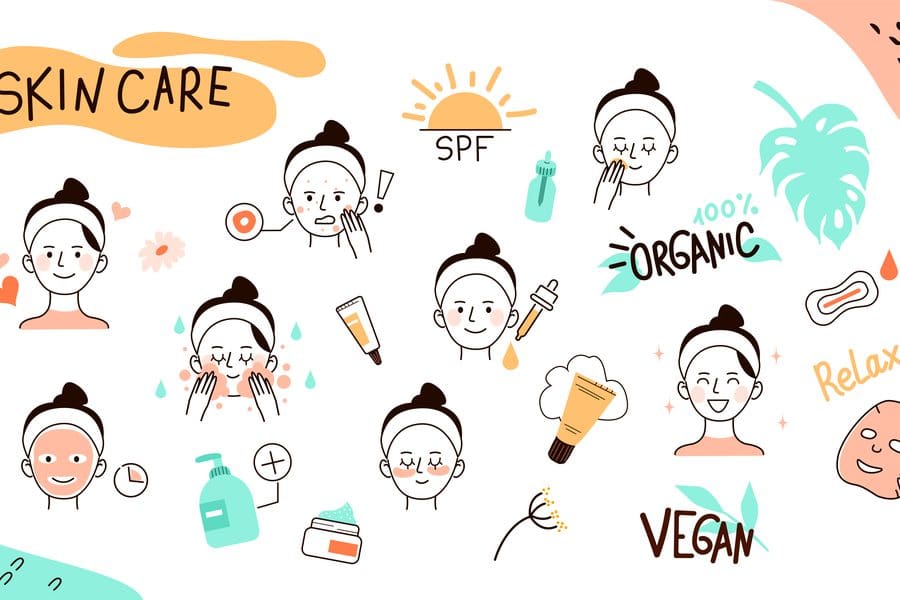If you’ve ever read beauty advertisements and noticed a striking resemblance of words and descriptions between different brands, you are not alone. The beauty industry is buzzing with keywords that are on-trend. Unlike having a certified cruelty-free or organic label, very general buzzwords will appear without real proof to back them up. Beware of vague descriptions! We’re here to help you dig deeper and learn how to read descriptions that say what they mean and mean what they say. Read on!
Clean Beauty Skincare
What does the word clean actually mean when referring to your favorite beauty essentials? First, the word clean in beauty is not a regulated or clearly defined term by the FDA. Clean beauty ingredients, also coined as natural ingredients, refer to nontoxic products.
Most of the beauty industry that markets cosmetics as clean are against using ingredients like parabens or phthalates. According to Jama Dermatology, the clean skincare trend’s disapproval of parabens and other safe preservatives has some unforeseen consequences, like the increased use of botanicals which can cause contact dermatitis.
Let’s break it down!
Parabens are used as preservatives to prevent the growth of bacteria. The argument is that parabens have links to breast cancer and other health issues; however, according to the FDA, there is no scientific research that parabens used in cosmetic formulas have any adverse effects. Another concern is that phthalates are used to reduce cracking. The FDA reports that there is not enough scientific evidence to support health risks caused by phthalates.
Natural
Like clean cosmetic skincare, natural is not a regulated word to describe ingredients in the beauty industry. We want to think this means a product is free of synthetics, but that isn’t always true.
Natural ingredients come from all different sources. Also, consider those cosmetics that market ingredients as natural can suddenly change suppliers, leading to formulation changes. In conclusion, synthetic ingredients are not always harmful. If you want to get to the bottom of what ingredients have actual health risks, check the FDA website or any peer-reviewed scientific articles.
Vegan/Cruelty-free
Vegan and cruelty-free have two different meanings and are often confused. Vegan means the beauty product doesn’t contain animal-derived ingredients. Cruelty-free means that beauty products aren’t tested on animals. If you’re striving to be a conscientious consumer, it’s helpful to know if a brand is not testing on animals, and one way to verify that is by checking the Peta website. Peta not only tells you which brands test on animals, but they give you specific brand product recommendations for products that are cruelty-free.
Sustainable/Eco-friendly
Sustainability comes down to how the product is collected, the ingredients it’s made with, how they produce their product, and how they package their products. A brand can follow various sustainable practices, like implementing a recycling program, committing to being plastic-free, or using manufacturers that solar power their facilities.
Usually, if a brand is truly sustainable or eco-friendly, they will provide specific details about their practices and products. Instead of the carbon copy brands that make general proclamations like using “eco-friendly” in their product descriptions, truly sustainable brands will provide details on where they source ingredients and how they use environmentally responsible practices when manufacturing their products. You can always do further research into the brand or email them to ask questions.







